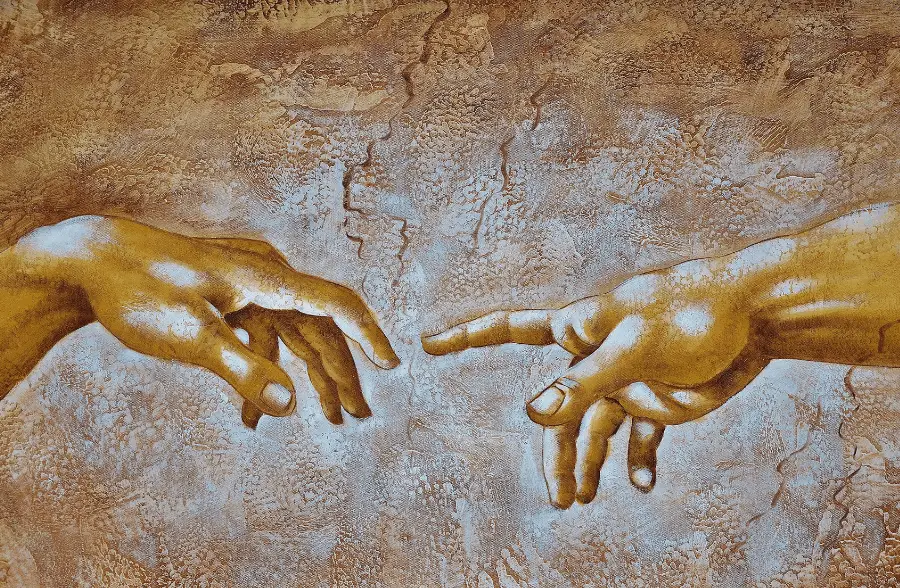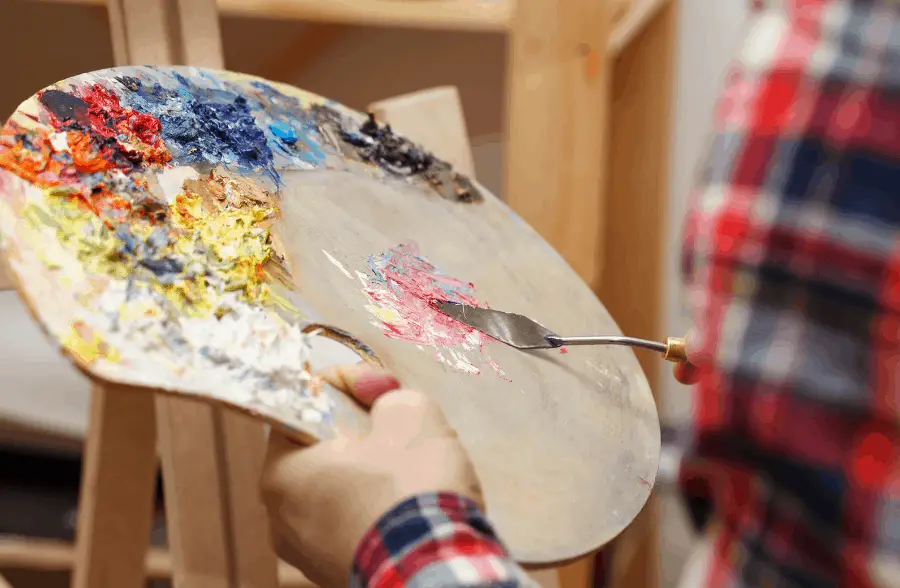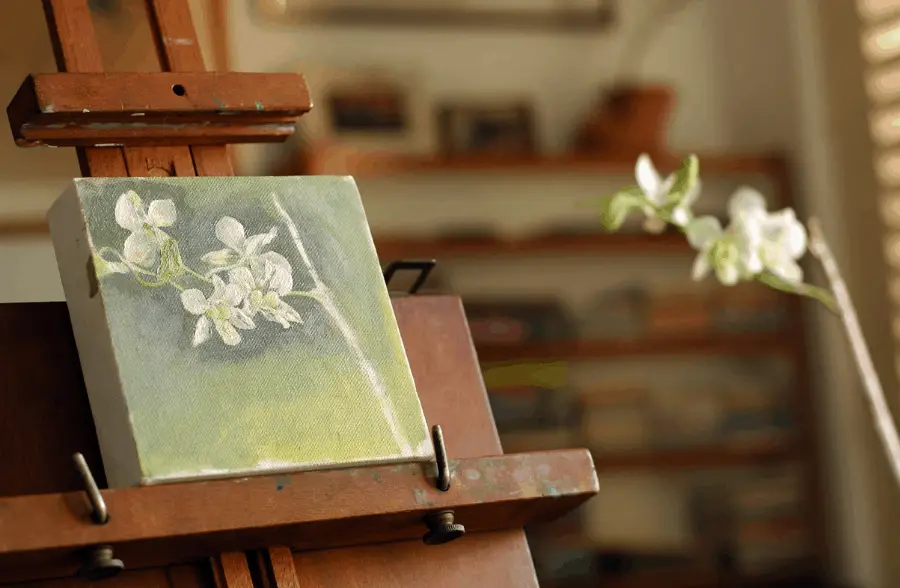Have you ever looked at your paints, see a letter rating, and wonder what that means? If you commonly paint with oil paints, you have more than likely seen this rating letter on your tubes of paint. The permanence of a paint is how long the paint is going to last without fading.
In terms of permanence, paints are given a rating. This determines how likely they are to remain unchanged when exposed to light and other factors. So, is oil paint permanent? Yes, most oil paints are permanent, but some have a lower permanency level than others, so always check your pain tubes. The ratings include AA for extremely permanent, A for permanent, B for moderately durable, and C for fugitive.
The permanence rating for oil paint will vary based on the pigment and even the brand of the paint. For example, there are some brands that offer a paint with a moderate rating, then another paint of the same pigment as a permanent option. In this article we go over everything you need to know for choosing the right oil paint, plus much more! Let’s read on.
Do Oil Paints Fade?

Yes they can, and fading is a huge concern when it comes to oil paints. This is why museums have paintings in rooms that are climate controlled with dim lighting and prohibit the use of flash photography. Fading of the oil paints will start on the surface and generally starts when exposes to heat.
My favorite and top pick is always Arteza Oil Paints. They have so many different colors, and the quality is amazing! I usually use Arteza Paints for all my projects.

Oil paints can also fade when exposed to direct sunlight. UV rays is the most significant reason that oil paints fade. A painting that is set in unfiltered sunlight has an increased risk of fading at a much faster rate. Filtered sunlight is equally as damaging, as it is known for causing varnish to darken.
Some pigments are going to fade faster than others. The paints will usually have a lightfast grade that will let you know how fast the color is going to fade. Grade I or II are going to fade slower than those with higher ratings.
Oil paints are prone to fading, but there are some things you can do to prevent fading. For instance, oil paints are most likely to change when exposed to heat and sunlight. This means you should keep your painting away from heating vents and fireplaces.
The best place for an oil painting is in an open room with proper air flow. Air allows the paint to breathe, which will keep the painting fresh. A space that is closed or damp is likely to have inefficient air flow that can cause the growth of mold, bugs, discoloration, and rotting.
It will also be beneficial to your painting to clean and dust every so often. Using a soft feather duster can decrease the rate of fading and extend the life of the paints. If the painting is left with a layer of dust, the appearance of the paint will become cloudy, and the dust can stick to the paint.
One of the most important things you can do to protect your oil painting from fading is add a coat of varnish when the painting is completely dry. A varnish will protect your painting from dirt, soot, dust, and UV light.
A varnish can also create an even finish across your painting. I highly recommend this Grumbacher Glossy Varnish Spray, to seal and protect your oil paintings with.

It is important to make sure you apply the varnish at the right time. If you apply the varnish when the painting isn’t completely dry, the varnish can merge with the paint. This can cause the painting to become faded and dull quickly instead of protecting the painting.
It’s important to note that you should wait around 6-8 months before sealing your painting. Anything sooner than that can also ruin your artwork.
Do Oil Paints Last Longer than Acrylics?

The debate between oil paints and acrylic paints has been a popular one for years. Some artists believe that acrylic paints are better, while others believe oil paints are better. Oil paint has been used for centuries, while acrylic paints haven’t been around for 100 years yet.
Acrylic paints have not been around long enough to determine whether they will last longer than oil paints or not. Oil paints, however, have lasted for centuries. For example, the Mona Lisa was painted somewhere between 1503 and 1506, but you can still see her on display over 500 years later.
From what we currently know about acrylic paints, they do seem to be just as permanent, if not more, as oil paints. It is hard to be completely sure which paint will last longer because acrylics have not been used as long as oil paints.
I always use Arteza Acrylic Paints for my projects, because the colors are super vibrant and vidid. Acrylics can last a long time as well, but you will need to seal your painting to protect it from chipping and humidity.

When it comes to how long the paints will last in cans or tubes, oil paints will stay fresh longer than acrylic paints. Acrylic paints are only known to last around 10 years before they need to be replaced. Oil paints can last anywhere from 30 to 40 years if they are taken care of properly.
If you are trying to decide which paint to use, there are some other aspects you can consider. Oil paints dry slower than acrylics. Acrylic paints will be dry in about an hour, while it can take oil paints days or even weeks to completely dry. Oil paints are better for beginners and slower painters who need some extra time.
If you want bright, bold colors, you will want to use oil paint. Oil paints have more pigment than acrylic paints. Blending techniques will also be more vivid, making your painting look more life-like. Oil paints also apply smoother than acrylic paints.
How Long Do Oil Paints Last?

Oil paints are considered to be one of the longest lasting materials for art in the world. Depending on what they are made with and the conditions they are stored in, oil paints can have a shelf life of up to 40 years. You can expect your paint to last longer if you keep it in an airtight storage container.
The environment of where you store your paint plays a role in how long the paint will last. The temperature and humidity of the space both impact how quickly the paint will age. For the best results, there are precautions you can take. First, make sure the lids of the paint are completely clean before storing.
I like to store my oil paints in paint storage containers such as this one here. The paints are kept airtight, and no humidity can get it. Some people also like to keep their paints in smaller individual jars like these here.

You can expect your oil paint to separate over time. The oil will split from the pigment, which can impact the quality of the paint. This means that every couple of years, you will need to determine whether or not the paint is up to your standards for painting.
When it comes to how long oil paint will last on your painting, there are a few things that impact how long the oil paint will last. For instance, cracking can play a part in how long the oil paint will last. A few weeks after your painting is complete, the bottom layer of paint will start forming miniscule cracks.
Over time, these cracks can cause the paint to flake off and become powdery to the touch. Eventually, the top layers of the paint will seem dull and brittle. To prevent this from happening, you need to be careful with the preparation process of the oil paint.
The drying process can also impact how long your oil painting will last. If the oil paint dries too quickly, your top layer might start to sink into the previous layer. This creates a dull appearance and can speed up the process of cracking. Make sure your painting is drying in the proper climate to prevent this.
You might also run into an issue with your oil paint peeling away from the surface. Peeling will happen when the paint doesn’t properly adhere to the surface. The paint will start to flake off in chunks, ruining your painting.

Peeling occurs for two reasons. The first is neglecting to prime your surface. If you don’t make sure your surface is dry and free of dust, and you don’t use a primer, your paint won’t stick to the surface properly. Some surfaces, like stretched canvas, will come pre-primed which is helpful.
The other reason peeling occurs has to do with the paint. If you add too much thinner to your paint, the less likely it will be to properly adhere to the surface. Unfortunately, there isn’t anything that can be done about a painting that is beginning to peel.
Final Thoughts
When it comes to oil paint, the permanence is a huge factor. Oil paint uses a permanence rating to determine how likely the paint is to remain permanent after it dries. Since oil paint has been around for centuries, we have a pretty good idea of how long the paint will last. The Mona Lisa has held up after 500 years.
With acrylic paint quickly becoming popular, it is often compared to oil paints. Acrylic paint hasn’t been around long enough to tell if it will be permanent or not. From what we currently know, it will likely be as permanent as oil paint.
Oil paint will last for a while, both on a surface and in the container. If taken care of properly, you can use the same oil paint for up to 40 years without it drying out or going bad. Make sure to follow my tips and recommended products to ensure your oil painting lasts a very long time.

